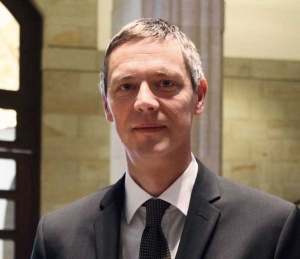Breaking Travel News interview: Frank Wend, State Chancellery, Saxony
 Frank Wend speaks to Breaking Travel News
Frank Wend speaks to Breaking Travel News The German state of Saxony has everything travellers can hope for in holiday: old masters in Dresden’s museums, young artists in Leipzig’s converted cotton mill, and traditional crafts in the woodcarving workshops of the Erzgebirge Mountains.
Castles and palaces celebrate the splendour of history, while unspoilt Saxon Switzerland inspires with the beauty of nature.
Alternatively, the vineyards of the Elbland region exude a relaxed savoir-vivre otherwise found only in Southern Europe.
And especially in the weeks before Christmas Saxony turns into a Winterwonderland - with its beautiful landscape and lots of traditions.
Anyone who experiences the many pleasures Saxony has to offer may never want to leave. After all, where else would you go?
Here Breaking Travel News takes it all in with Frank Wend from the Saxony State Chancellery.
Breaking Travel News: Can you tell our readers a little about what is on offer ‘behind the scenes’ in Saxony? Dresden and historic Leipzig are perhaps more well know, but what else can visitors expect?
Frank Wend: There are six holiday regions in Saxony: Upper Lusatian, Saxon Elbland, Saxon Switzerland, Saxon Castle and Heathland, Ore Mountains and Vogtland.
Every region has its own character which is well worth discovering.
If you’re a fan of the great outdoors Saxony has the perfect environment for long distance hiking tours.
Germany’s most popular hiking trail runs through the Malerweg (Painter’s Trail) in Saxony and the Elbe Sandstone Mountains.
For more adventurous mountaineers, Saxony has been named the most popular German mountaineering region with high-ranking quality trails such as Vogtland-Panorama-Weg and the Höhensteig around Klingenthal.
Other popular hiking trails include the scenic Oberlausitzer Bergweg trail through the Ore Mountains, the Muldentalwanderweg along the Mulde Valley and the Sächsische Weinwanderweg which combines love of walking with a local wine tour!
The musical landscape of Saxony is unrivalled in Germany.
Nowhere else is the theatre and orchestra offering denser.
There is an abundance of concert houses and theatres, museums and outstanding architecture.
Every year, more than 40 nationally and internationally recognised music festivals take place all over Saxony in an array of backdrops: opera houses, castles, palaces, parks, historical grounds, quarries, churches and squares.
Saxony has a long tradition of producing good quality wines on the steep slopes of the Elbe Valley; familiar names include Gold Riesling, Weißburgunder, Scheurebe and red Regent.
Hikers and cyclists can explore the surrounding hills; enjoy meeting wine makers and of course buying a bottle or two!
Here visitors can enjoy the relaxed approach to life treasured by the locals.

BTN: Where do you tend to welcome guests from? Germany is the largest outbound tourism market in Europe, so the domestic market must also play a big role in the region?
FW: We welcome guests from the Netherlands, Austria, Switzerland, the USA, Great Britain and Poland, which is one of the key growth markets for incoming tourists from abroad for Saxony.
With 70,000 overnight stays from January to July 2013 and thus an increase of nearly 28 per cent compared to the same period last year, we hope this positive trend continues.
BTN: Does the meeting, incentives, conferences and exhibitions sector play a big role in tourism in Saxony?
FW: Saxony is a place where many cultural events, meetings, business conferences and exhibitions take place, especially in Dresden and Leipzig.
There is a well-developed industrial sector as well as an important centre for service and administration industries.
Dresden is the most important industrial location in eastern Germany and a heavyweight on foreign markets.
Relative to its size, it has the most scientists and research institutions found in Germany.
Its scientific workforce and research institutes are ranked highest among Germany’s cities.
Dresden University of Technology is eastern Germany’s only University of Excellence.
Leipzig is celebrated within the international art world and hosts numerous exhibitions and art galleries.
One of the oldest trade fair centres in the world is The Leipzig Trade Fair which is located just seven kilometres from the city in the newly-built exhibition centre.

How supportive do you feel the government – both of Saxony and Germany – are toward tourism? Is there anything more you would like to see officials do to help the development of the sector?
FW: The Free State of Saxony represents an area of unrivalled natural beauty, a rich cultural landscape and a home for century old traditions.
The government supports tourism through its promotional activities, making local multilingual information accessible online and via its recent public relations campaign; Simply Saxony.
The campaign focuses on public relations and marketing activities to create awareness and develop a positive image for Saxony all over the world.
Last summer the government supported a large advertising campaign to promote holidays in Saxony following the flood which affected large parts of Saxony in June 2013.
More Information
For more information on visiting Saxony head over to the official tourism website.

